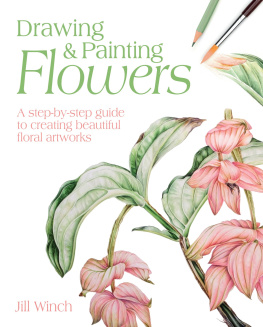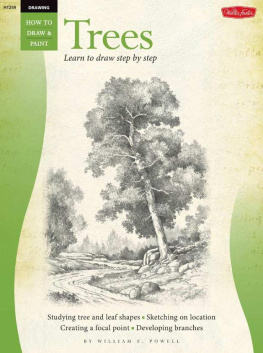
Flowers
with William F. Powell
Its no wonder were naturally attracted to flowers. Their fascinating and varied forms, colors, and textures provide a never-ending source of artistic inspiration. In this book, youll learn the step-by-step process of rendering various types of flowersfrom their basic shapes to their completed forms. Youll begin with the tools and materials needed to get started, as well as the shading techniques that will bring your flower drawings to life. Then youll discover the foundations of pictorial compositions and floral arranging so you can set up your own dynamic still lifes. Also included are handy tips for creating unusual effects and incorporating background elements to produce a finished work of art. With just a little practice, youll learn to draw a wealth of flower varieties and see just how rewarding re-creating these captivating subjects can be!William Powell

CONTENTS
Getting Started
Drawing is just like writing your name. You use lines to make shapes. In the art of drawing, you carry it a bit further, using shading techniques to create the illusion of three-dimensional form.
Only a few basic tools are needed in the art of drawing. The tools necessary to create the drawings in this book are all shown here.
Pencils
Pencils come in varying degrees of lead, from very soft to hard (e.g., 6B, 4B, 2B, and HB, respectively). Harder leads create lighter lines and are used to make preliminary sketches. Softer leads are usually used for shading.
Flat sketching pencils are very helpful; they can create wide or thin lines, and even dots. Find one with a B lead, the degree of softness between HB and 2B.
Although pencil is the primary tool used for drawing, dont limit yourself. Try using charcoal, colored pencils, crayons, and pastelsthey can add color and dimension to your work.

2B PENCIL
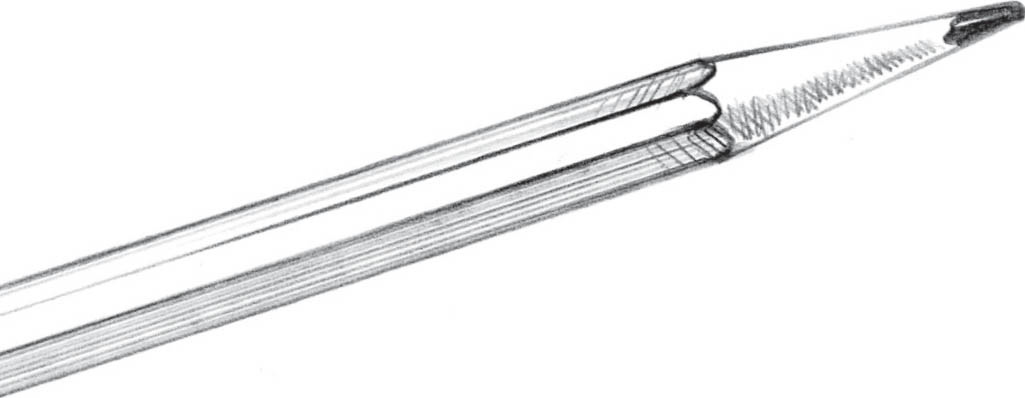
HB PENCIL

FLAT SKETCHING PENCIL
Erasers
Erasers are not only useful for correcting mistakes, but they are also fine drawing tools. Choose from several types: kneaded, vinyl, gum, or rubber, depending on how you want to use the eraser. For example, you can mold a kneaded eraser into a point or break off smaller pieces to lift out highlights or create texture. A gum or rubber eraser works well for erasing larger areas.
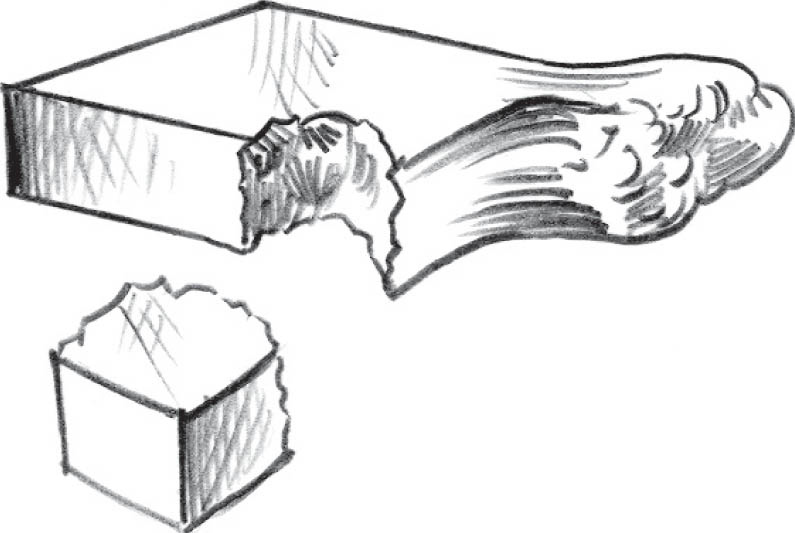
KNEADED ERASER
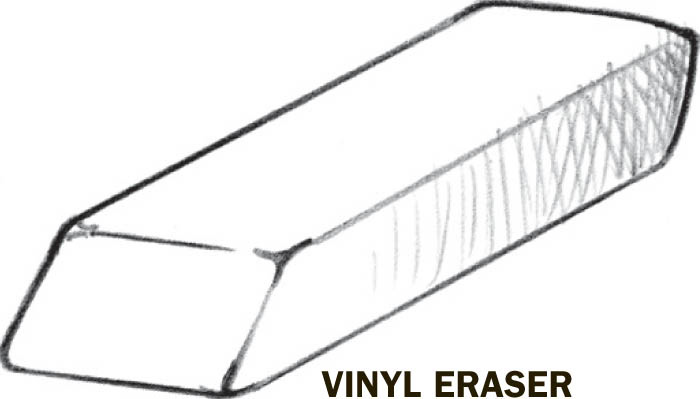
Paper
There are many types of paper that vary according to color, thickness, and surface quality (e.g., smooth or rough). Use a sketch pad or inexpensive bond paper for practice. For finer renderings, try illustration or bristol board. Bristol board is available in plate finish, which is smooth, or vellum finish, which has more tooth. As you become more comfortable with drawing techniques, experiment with better quality paper to see how it affects your work.
Other Helpful Materials
You should have a paper blending stump (also known as a tortillon) for creating textures and blends in your drawing. It enhances certain effects and, once covered with lead, can be used to draw smeared lines.
Since you should conserve your lead, have some sandpaper on hand so you can sharpen the lead without wearing down the pencil. You may want to buy a metal ruler, as well, for drawing straight lines. Lastly, a sturdy drawing board provides a stable surface for your drawing.
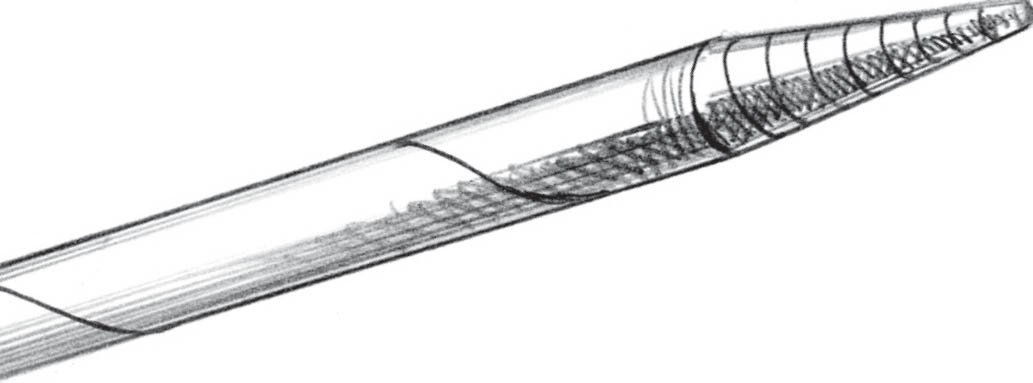
PAPER STUMP/TORTILLON
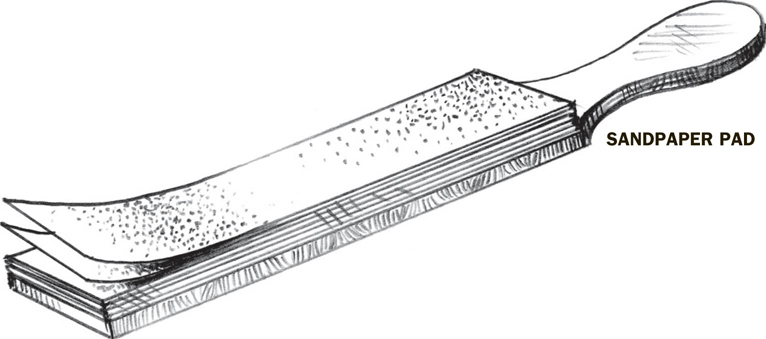
Final Preparations
Before you begin drawing, set up a spacious work area that has plenty of natural light. Make sure all your tools and materials are easily accessible from where youre sitting. Since you might be sitting for hours at a time, find a comfortable chair.
If you wish, tape the paper at the corners to your drawing board or surface to prevent it from moving while you work. You can also use a ruler to make a light border around the edge of the paper; this will help you use the space on your paper wisely, especially if you want to frame or mat the finished product.
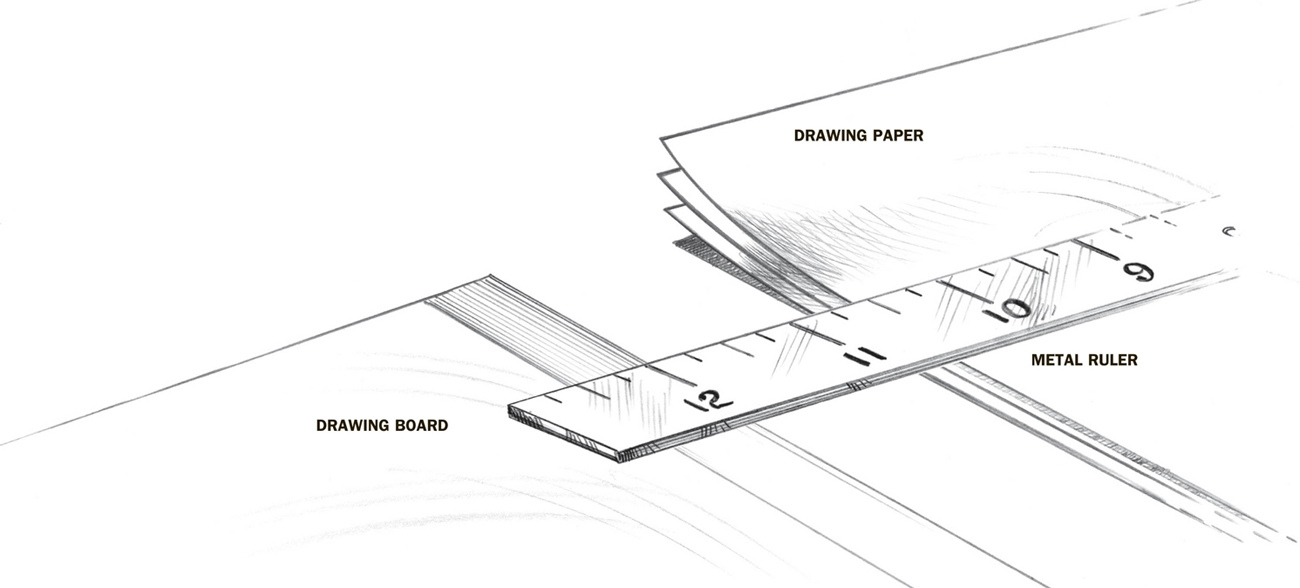
Shading Techniques
Shading enables you to transform mere lines and shapes in your drawing into three-dimensional objects. As you read through this book, note how the words shape and form are used. Shape refers to the actual outline of an object, while form refers to its three-dimensional appearance. See the examples in this section.

This is an oval shape.
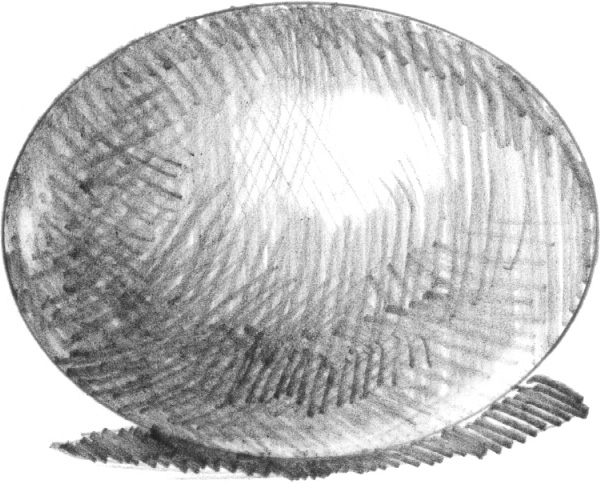
This has a three-dimensional, ball-like form.
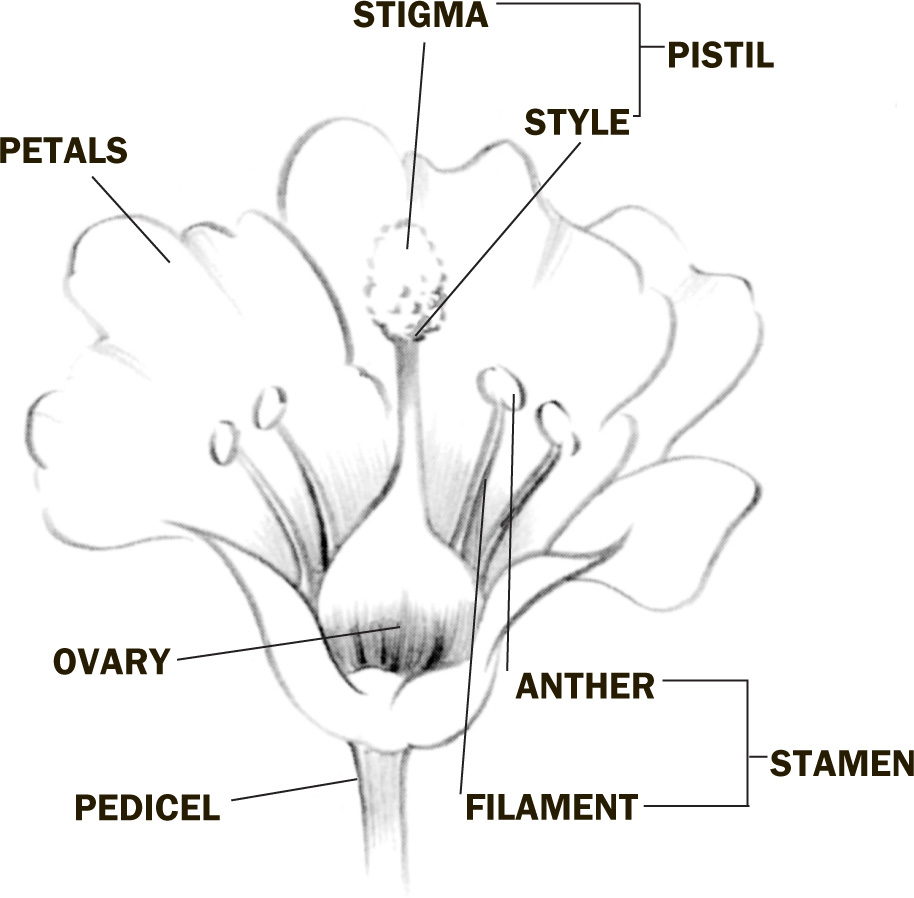
The diagram here illustrates the various shapes of the flower parts, which you should study closely before drawing. With effective shading you can bring out their individual forms.
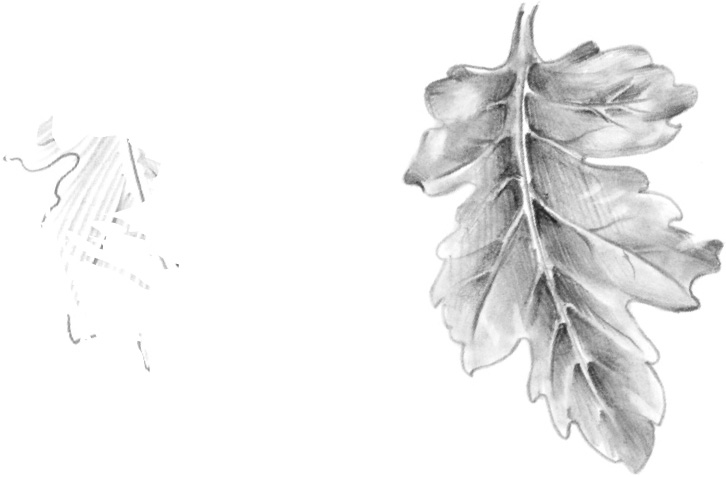
As you shade, follow the angle of the objects surface, and blend to allow the texture to emerge.
As you can see, pencils can be used with sharp, round, flat, and blunt points, and several techniques can be combined on one surface. The paper stump helps smear the lead, making a blend softer. Experiment and see what kinds of textures you can create on your own.
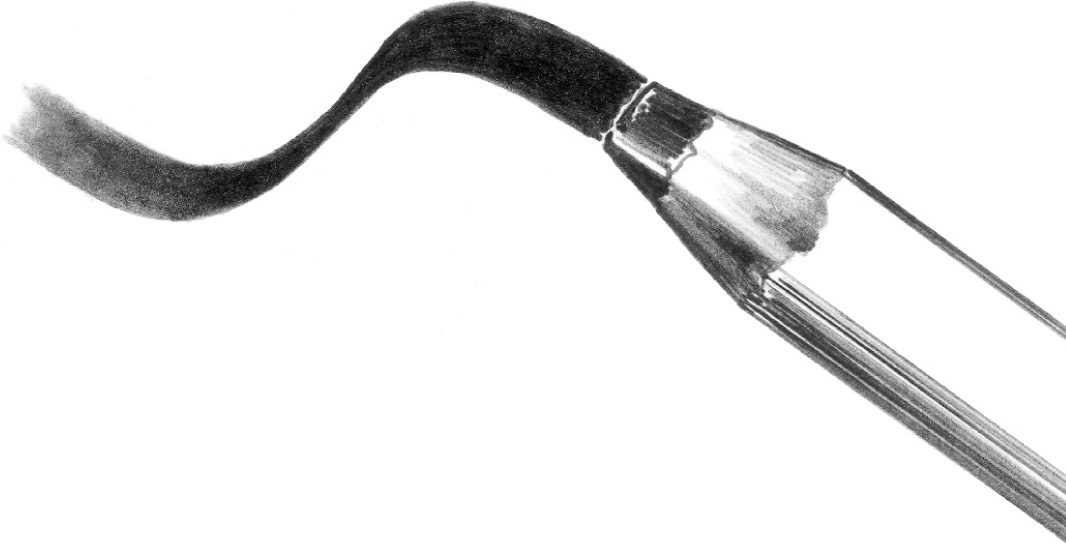
FLAT SKETCH
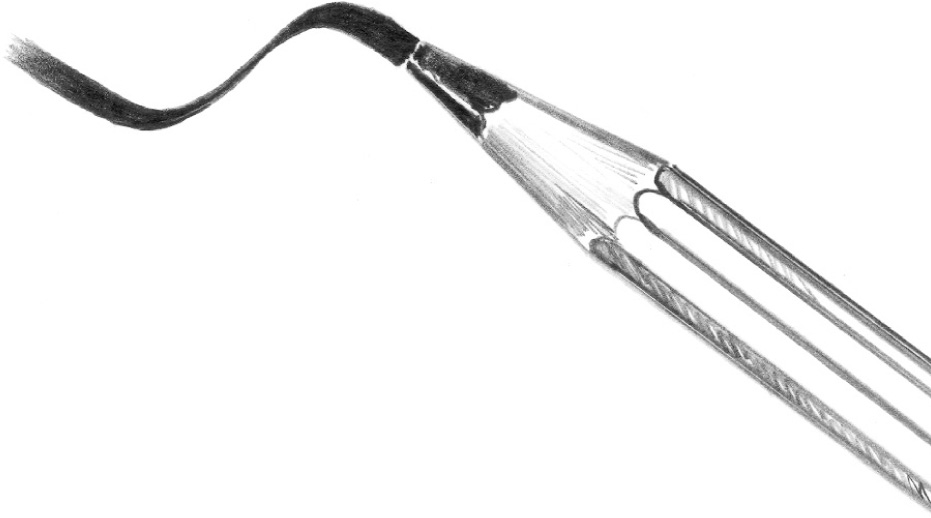
Next page







